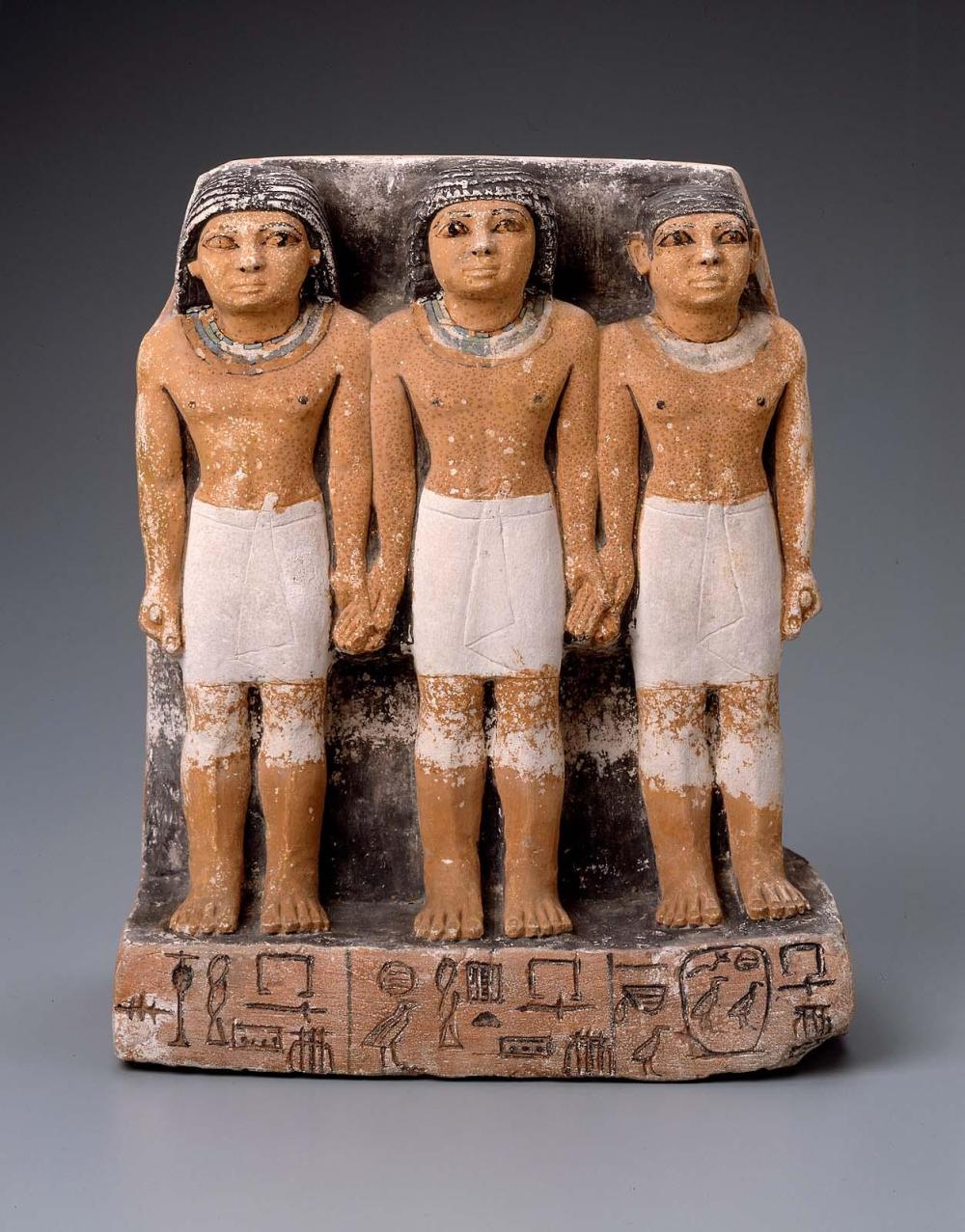Advanced Search 

Triad of standing male figures
Egyptian
Old Kingdom, Dynasty 5
2465–2323 B.C.
Findspot: Egypt, Giza, tomb G 2009
Medium/Technique
Painted limestone
Dimensions
Height: 25 cm (9 13/16 in.)
Credit Line
Harvard University—Boston Museum of Fine Arts Expedition
Accession Number06.1882
CollectionsAncient Egypt, Nubia and the Near East
ClassificationsSculpture
The triad of standing figures represents three tenant farmers of the palace, NikauKhufu, KhuPtah and Hesi, who were most likely related to the tomb owner.
Statues of the deceased and his family were frequently placed in a sealed room called a serdab, often connected to the offering chapel by a slit in the wall. Egyptians believed the ka, or spirit of the deceased, could enter a statue in the serdab and peer out of the slit. Food for the ka was placed on an offering table near the serdab. These three small statues and offering table were found in a serdab at Giza. The large standing pair statue from another tomb (see 06.1876) is similar to the one originally found with this group, and is now on display in the Cairo Museum.
Statues of the deceased and his family were frequently placed in a sealed room called a serdab, often connected to the offering chapel by a slit in the wall. Egyptians believed the ka, or spirit of the deceased, could enter a statue in the serdab and peer out of the slit. Food for the ka was placed on an offering table near the serdab. These three small statues and offering table were found in a serdab at Giza. The large standing pair statue from another tomb (see 06.1876) is similar to the one originally found with this group, and is now on display in the Cairo Museum.
DescriptionStanding statuette of brightly painted limestone, representing three brothers, Hes, Khuptah and Nikaukhufu. All three men wear short kilts and broad collars. Hes wears a full, striated, shoulder-length wig, while Khuptah has a short curly wig, and Nikaukhufu wears only his closely cropped hair. The front of the base, inscribed with the men's names, is painted pink in imitation of granite, while the top of the base and back pillar are painted black.
ProvenanceFrom Giza, tomb G 2009. 1906: excavated by the Harvard University-Museum of Fine Arts Expedition; 1906: assigned to the MFA by the Egyptian government.
(Accession Date: November 8, 1906)
(Accession Date: November 8, 1906)
